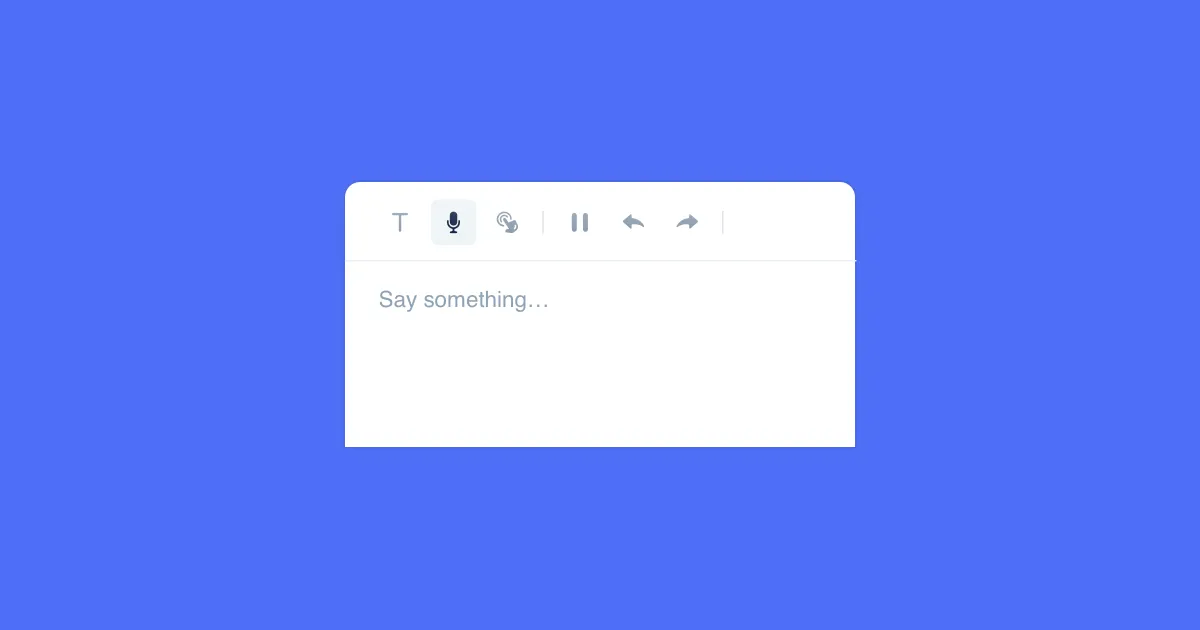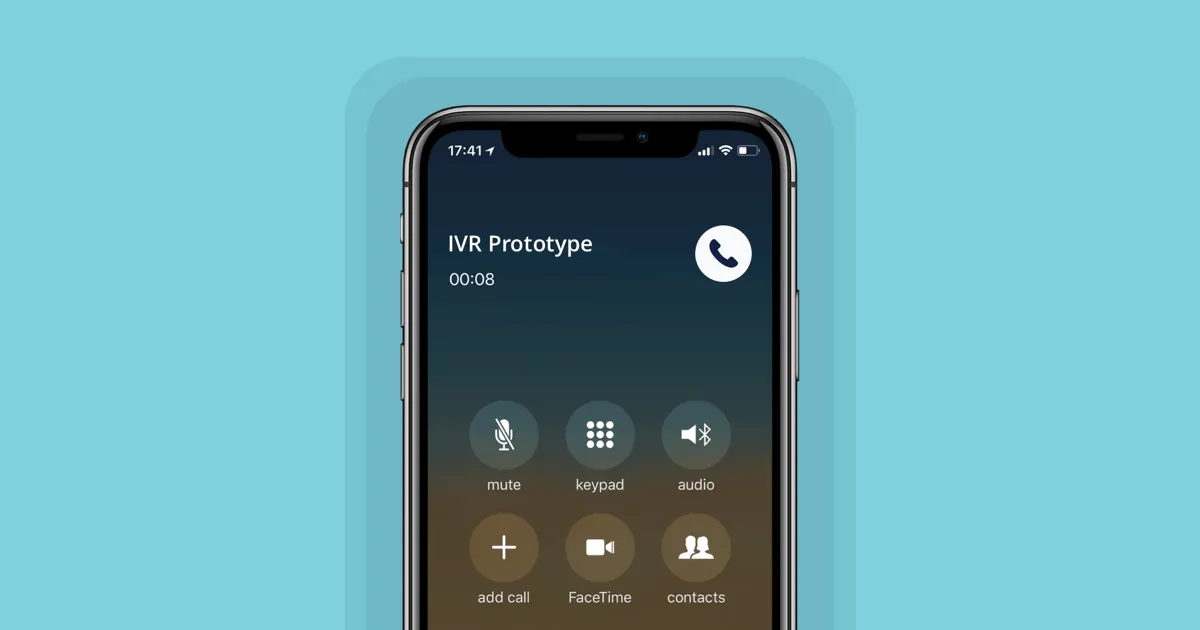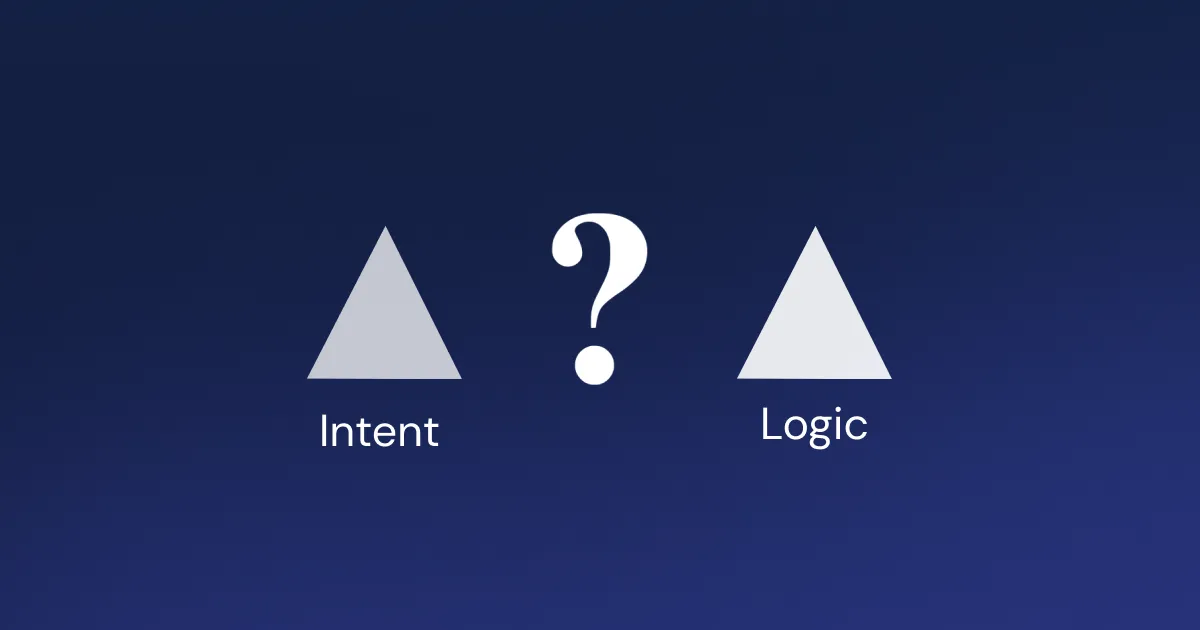Conversation design best practice #1: Set your intentions
Have you ever tried to insert yourself into a conversation and feel completely lost? It’s confusing at best and leaves you discouraged and unwelcomed.
Before designing your conversational interface, get to know who you may be interacting with, the context of the conversation, and what the users may want to get out of it. Purpose provides direction which can help lead to more fruitful engagements.
Conversation design best practice #2: Let people be heard
Take interest in what the user has to say and build trust through validation. That’s how healthy relationships are formed. Practice active listening and acknowledge frequently - whether by confirming the user’s response or empathizing with emotion. This ensures you are hearing both correctly, and that they know you are. Learn more about ‘slot confirmations’ in Voiceflow.
Conversation design best practice #3: Elicit cooperative conversations
Bot conversations should follow the Cooperative Principle where parties in a conversation cooperate in order to advance the conversation. Interactions should account for implicit confirmations and forward-moving questions to guide users to the conversation’s intentions.
Conversation design should also account for overanswers by users so that a question is not asked if an implicit answer has already been given. This can be done via ‘slot requirements’ in Voiceflow.
Bot: “What would you like to order?”
User: “A grande dark-roast coffee. I’m so tired”
🙅♂️ Bot: “What size would you like?”
🙌🏼 Bot: “Sounds good. You ordered a large dark-roast coffee. Will that be all?”
Conversation design best practice #4: Anticipate for conversational error
It happens in everyday conversation: maybe they misheard you (no match), get distracted and don’t respond (no input), or provide an answer that doesn’t necessarily fit your question (system error). They’re hard to expect but you can hide errors by designing conversation repairs or creating rapid reprompts.
- Conversational repair: The process by which a speaker recognizes a speech error and repeats what has been said with some sort of correction. Ex. “Did you mean, ______?”
- Rapid reprompt: Asking a short immediate question to give users another chance to respond. Ex. “Sorry, what was that?” vs. “Sorry, could you please provide me with your telephone number?”
Conversation design best practice #5: Develop personas for your voice experience
Chatbots or voice assistants are not human (clearly). But it can still anthropomorphize human qualities that make a conversation more engaging. Having a persona/personality is one of those qualities, especially with voice design. That’s because words carry emotions.
The Google Assistant team has discovered that the conversational bots with the best retention also had the strongest personas. This also ensures that users connect with your brand inline with your values. Create a persona style guide and learn more about Voiceflow’s SSML Editor.
Conversation design best practice #6: Rehearse Your Conversations
Before designing your conversations, run through the flow of the conversation preferably with others’ feedback. This will allow you to provide structure (& intention) to the conversation, anticipate technical limitations, and discover alternative interpretations of your script that you did not originally account for.
Putting it all together
Conversations and to a larger extent, language, is complex and filled with nuances. But that’s not to say we can’t improve our ability to engage in better conversations.
The goal isn’t to recreate human interaction. The goal is to elicit an engaging conversation that feels less automated and helps users with what’s intended.
The best conversations make people feel comfortable, adjusting to the subtle changes without pause and dialogue flows naturally.
Let us know what you think makes for great conversation design! Sign up for our blog and shoot us a message.
Conversation design best practice #1: Set your intentions
Have you ever tried to insert yourself into a conversation and feel completely lost? It’s confusing at best and leaves you discouraged and unwelcomed.
Before designing your conversational interface, get to know who you may be interacting with, the context of the conversation, and what the users may want to get out of it. Purpose provides direction which can help lead to more fruitful engagements.
Conversation design best practice #2: Let people be heard
Take interest in what the user has to say and build trust through validation. That’s how healthy relationships are formed. Practice active listening and acknowledge frequently - whether by confirming the user’s response or empathizing with emotion. This ensures you are hearing both correctly, and that they know you are. Learn more about ‘slot confirmations’ in Voiceflow.
Conversation design best practice #3: Elicit cooperative conversations
Bot conversations should follow the Cooperative Principle where parties in a conversation cooperate in order to advance the conversation. Interactions should account for implicit confirmations and forward-moving questions to guide users to the conversation’s intentions.
Conversation design should also account for overanswers by users so that a question is not asked if an implicit answer has already been given. This can be done via ‘slot requirements’ in Voiceflow.
Bot: “What would you like to order?”
User: “A grande dark-roast coffee. I’m so tired”
🙅♂️ Bot: “What size would you like?”
🙌🏼 Bot: “Sounds good. You ordered a large dark-roast coffee. Will that be all?”
Conversation design best practice #4: Anticipate for conversational error
It happens in everyday conversation: maybe they misheard you (no match), get distracted and don’t respond (no input), or provide an answer that doesn’t necessarily fit your question (system error). They’re hard to expect but you can hide errors by designing conversation repairs or creating rapid reprompts.
- Conversational repair: The process by which a speaker recognizes a speech error and repeats what has been said with some sort of correction. Ex. “Did you mean, ______?”
- Rapid reprompt: Asking a short immediate question to give users another chance to respond. Ex. “Sorry, what was that?” vs. “Sorry, could you please provide me with your telephone number?”
Conversation design best practice #5: Develop personas for your voice experience
Chatbots or voice assistants are not human (clearly). But it can still anthropomorphize human qualities that make a conversation more engaging. Having a persona/personality is one of those qualities, especially with voice design. That’s because words carry emotions.
The Google Assistant team has discovered that the conversational bots with the best retention also had the strongest personas. This also ensures that users connect with your brand inline with your values. Create a persona style guide and learn more about Voiceflow’s SSML Editor.
Conversation design best practice #6: Rehearse Your Conversations
Before designing your conversations, run through the flow of the conversation preferably with others’ feedback. This will allow you to provide structure (& intention) to the conversation, anticipate technical limitations, and discover alternative interpretations of your script that you did not originally account for.
Putting it all together
Conversations and to a larger extent, language, is complex and filled with nuances. But that’s not to say we can’t improve our ability to engage in better conversations.
The goal isn’t to recreate human interaction. The goal is to elicit an engaging conversation that feels less automated and helps users with what’s intended.
The best conversations make people feel comfortable, adjusting to the subtle changes without pause and dialogue flows naturally.
Let us know what you think makes for great conversation design! Sign up for our blog and shoot us a message.







.svg)